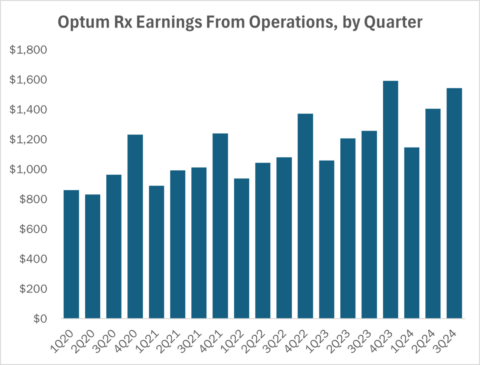If you want to search Cost Curve back issues or link to anything you read here, the web links and archive are online at costcurve.beehiiv.com. You can subscribe there, too.
I haven’t written too much about compounded GLP-1 medicines, even though there were clearly some pricing implications. My basic thesis was that the compounding story was really a story about supply, and that price was secondary there.
As long as GLP-1 were in short supply, my logic went, the whole phenomenon was just a glitch in the matrix, creating a regulatory gray zone that would eventually shrink and disappear once supply constraints eased.
Well, now it’s official: semaglutide (Ozempic/Wegovy) is now out of shortage, per the FDA, which begins a kind of 60/90-day doomsday clock for compounders. Expect a flurry of legal action that will be somewhat difficult to handicap because — although the law seems clear — we’ve never really been here.
The FDA announcement is especially timely because Hims & Hers, which has emerged as the face of GLP-1 compounding and which got smacked by the markets on Friday, reports earnings today. The numbers themselves won’t say much about what’s coming next, but the analyst call — happening post-market — should be lit.
My current obsession remains how industry communicates about the launch price of new medicines.
It’s clear that list price changes over a medicine’s lifecycle are less and less interesting and less and less important. Various laws and regulations now place constraints on annual list price hikes, and while those laws aren’t absolute, the days of raising prices to meet sales numbers are now long gone.
What that does is make launch prices all the more important, because that becomes the stake that all future pricing conversations are tied to.** So I’m super-interested in how prices for new drugs are disclosed, given that there are no hard-and-fast rules about how to handle that kind of announcement.
For smaller public companies, the key question is materiality: If you think that investors need the price in order to properly value the company, you’re required by law to tell them. That usually comes in the form of a conference call, though sometimes it just means telling anyone who will ask. In rarer circumstances, companies can put it in a press release.
Earlier in the month, SpringWorks won approval of Gomelki, its new medicine for neurofibromatosis type 1. Springworks clearly worried that the price was material, but the company didn’t put the number in its press release or host an analyst call.
Instead, they used a less-common (but not unheard-of) approach. The company made the price public via an 8-K filing, the catch-all securities disclosure for public information that isn’t otherwise disclosed broadly.
So what’s the price? Per the filing: “SpringWorks estimates that the average cost of treatment will be approximately $22,000 per month for pediatric patients and $30,000 per month for adult patients.”
To be sure: it’s still net prices that are most critical, but I don’t want to get distracted here.
I was prepared to ignore Harvard/PORTAL Ben Rome’s LinkedIn post noting that pharmaceutical companies don’t really give back the majority of every dollar spent on medicines to middlemen, but STAT’s Bob Herman went and amplified it this morning. So let me try to address it is briefly as I can.
Rome’s argument is that estimates of where the “pharmaceutical dollar” goes are misleading when they include rebates because — by his logic — the gross-to-net spread ought not count in the calculus because those dollars don’t show up in some estimates of overall drug spend.
STILL: Rebates are very much a part of the cost structure of the pharmaceutical supply chain. They’re not some fiction that can be ignored. Those dollars flow back to PBMs and then (one hopes) to health plans and employers where they’re used to defray other costs. Assuming that rebates don’t exist doesn’t reflect the reality of the money flows.
Ironically, I think that Rome probably agrees with industry that real rebate reform would be a good thing. Industry is trying to build that case by talking about rebates. Rome is trying to build that case by minimizing the issue. The former feels more effective.
ELSEWHERE
There is a big effort to make a small tweak in IRA negotiations by exempting all medicines that have only orphan indications from negotiation. (Right now, only medicines with a single indication are protected.) We now have some compelling data from Health Management Associates (sponsored by Alexion) on what that will cost: less than $4 billion over the next decade. That’s a lot less than the $20 billion that had been estimated and probably a small price to pay for a robust orphan development ecosystem.
PBM reform probably isn’t coming in March, per Axios Pro. So we’ll get all of the shutdown, probably, with none of the progress.
Man, it sure seems like the Medicare Prescription Payment Program is a mess (who could have guessed). The National Community Pharmacists Association plopped this on its website. It implies that pharmacists may still be figuring out how to get paid. Also: “Part D plan member hotlines are providing confusing information about MPPP and are also using the encounter to steer patients into mail order from an affiliated mail-order pharmacy.” Oof.
I’d like to push back more forcefully on this Health Affairs Forefront piece that posits that the IRA won’t have a big effect on pharma, but we’re already 800 words deep in this newsletter, so let me sum up. It makes three points. One is that only a relatively small number of medicines are impacted, and the impact is not that great, which is really an “eye of the beholder” thing that doesn’t reflect commercial reality. One is that the small-biotech exemption is a big deal (it’s not: the provision sunsets in two years). And one implies that the orphan drug exemption is a huge loophole, which — per the item above — is also not particularly true.
My oldest is a medical historian, so I absolutely love it when history intersects with present-day policy questions. This JAMA Network Open piece, which looks at church records from 19th century Finland, manages to illuminate a critical question about the impact of socioeconomic status on vaccine mandates.
This AIS Health piece lays out how formulary placement of Humira biosimilars has quickly elevated copycat versions backed by pseudo-pharmaceutical companies owned by big PBMs. It’s built on Adam Fein data, and it’s all well visualized.
Cost Curve is produced by Reid Strategic, a consultancy that helps companies and organizations in life sciences communicate more clearly and more loudly about issues of value, access, and pricing. We offer a range of services, from strategic planning to tactical execution, designed to shatter the complexity that hampers constructive conversations.
To learn more about how Reid Strategic can help you, email Brian Reid at brian@reidstrategic.com.





